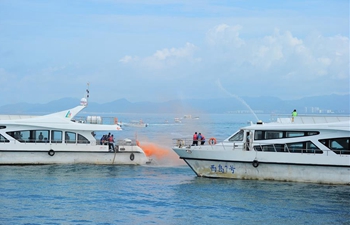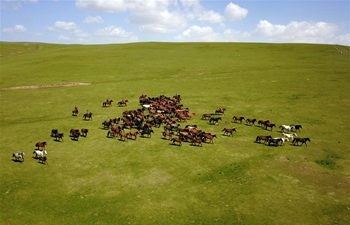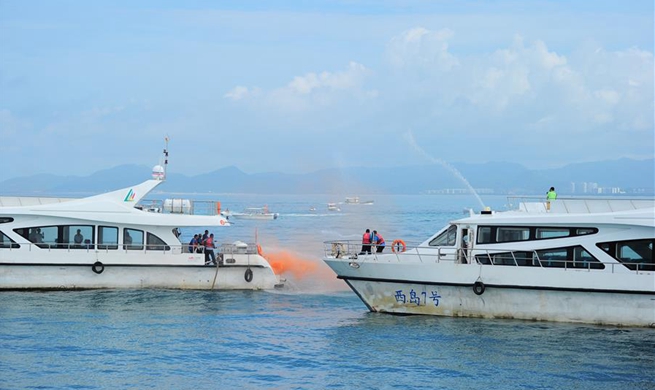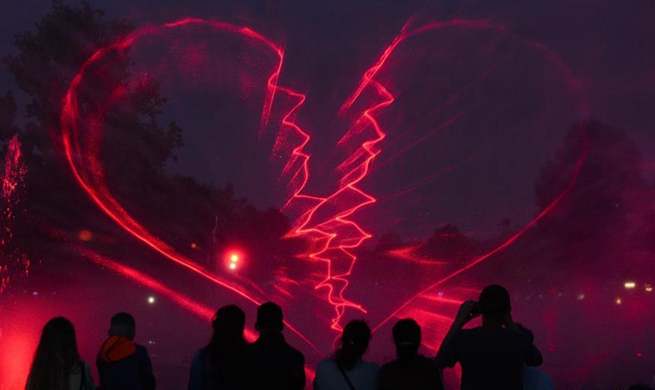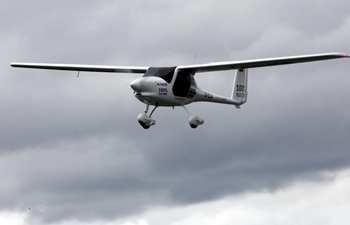URUMQI, June 23 (Xinhua) -- Knocking his wrench on a power tower while standing lonely in the middle of a vast desert, Ahmat Tohti listens attentively to the sounds it makes.
Differences in the sound can tell Tohti, an power tower inspector in Northwest China's Xinjiang Uygur Autonomous Region, whether the bolts and screws are securely tightened.
Xinjiang is China's powerhouse transmitting electricity to around 16 provinces and cities, serving 250 million people, according to statistics.
An expansive network of transmission towers has been built across the cities, deserts, and marshes in the region. Tohti and his seven colleagues are responsible for the safety of a sector in the Taklimakan, China's largest desert.
During summer, their jobs become more challenging.
Temperatures in the desert can rise to 40 degrees centigrade during the day and the sand can bring the ground temperature to more than 70 degrees.
Tohti has been a tower inspector for 28 years, and on a normal trip, he always carries binoculars, a camera and a gear bag weighing around four kilograms, but for the desert trip, he also brings naan bread and a one-liter bottle of water.
"They add to weight, but once you are in the desert, you never know when you will get out, it is essential to bring food and water," Tohti said.
In the sector Tohti inspects, China's State Grid has built a 563-km-long transmission line with 1,542 power towers, making it the world's longest 220,000 voltage transmission line.
Tohti and his colleagues inspect 865 of the towers. More than 300 of them are set deep in the desert with no access road so they need to travel on foot.
It takes the team a week to finish the inspection, with each of them walking more than 10 kilometers and inspecting dozens of towers each day.
The distance from one tower to another is usually around 500 meters, and the walk consumes the most energy and time, Tohti said.
Years of experience has taught him much about the desert. "You can walk faster on the top of the sand dune and should never walk in the lee side," Tohti said.
Below a tower, Tohti uses his binoculars to find the insulators, clamps and electricity fittings on the tower. Each of them needed to be carefully examined.
The heat and strong sunshine makes it painful to look up for a long time. Tohti also had to ration his water and takes only small sips each time.
To escape the hottest part of the day, the team starts working as soon as the sun comes up and takes a break from 11 a.m. to 5 p.m. After 5 p.m., they continue working until 9 p.m.
Inspections usually take place once a month, but additional inspections are required during severe weather conditions.
The Taklimakan experiences sandstorms more than 100 days a year, and Tohti said he has had too many encounters with sandstorms to count.
"We wrap ourselves in our clothes, hold on tight to the tower base, and wait for the storm to pass," he said. "Sometimes we have to evacuate by following the transmission line, otherwise it's very easy to get lost."





